Freezing temperatures can cause brown, crispy growth on plants that are susceptible to frost damage. Frost damage can occur when temperatures dip to or below the freezing point, 32 degrees Fahrenheit (0 degrees Celsius). And both cold-hardy plants and tenderer plants that do best in warmer temperatures can, depending on the circumstances, be affected by frost damage.
Growth damaged by frost can look ugly, and your first impulse may be to prune it — but don’t. Believe it or not, you can do more damage if you remove the damaged growth too soon. In fact, those ugly brown leaves actually help to protect the interior of the plant from future freezes. So, let’s dive into frost damage — how it affects our plants and, more important, how and when to prune frost-damaged growth.
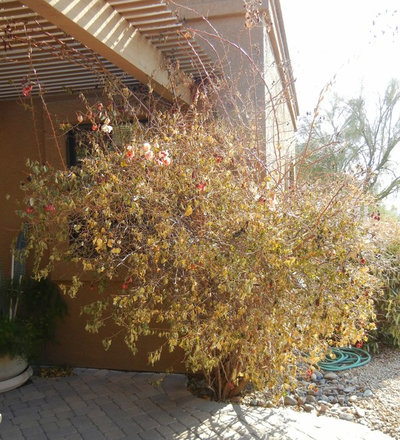
Noelle Johnson Landscape Consulting
Frosts and freezes. Before we talk about the damage that freezing weather can cause to plants, let’s talk about what frosts and freezes are and the damage they both can cause, which is called frost damage.
Frosts occur on clear nights when the temperature dips to 32 degrees Fahrenheit (0 degrees Celsius) or even a few degrees above. At these temperatures water vapor freezes on the surface of plants, creating a frosted appearance. Unless you have a garden filled with tropical plants, most plants can handle a light frost with little to no damage.
Freezes happen when very cold weather arrives and the temperature dips below 32 degrees and even into the 20s (negative Celsius) and below. Damage to plants from freezes is more severe than that from frost and can cause significant injury to plants.
Shown: A severely frost-damaged bougainvillea (
Bougainvillea sp, USDA zones 9 to 11, find your zone) shrub after the temperature reached the lower 20s
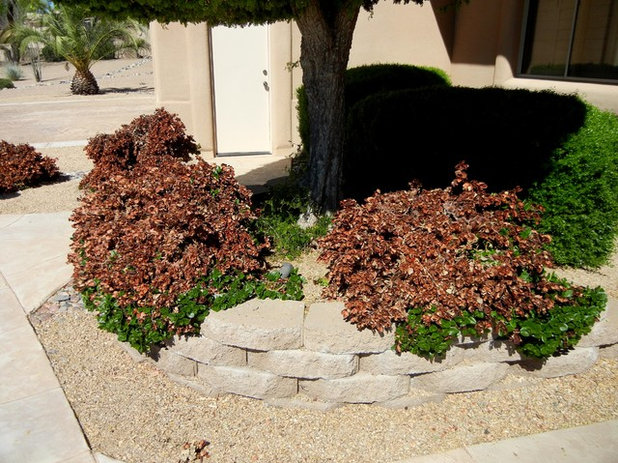
Noelle Johnson Landscape Consulting
How do freezing temperatures damage susceptible plants? When the outside air temperature hits 32 degrees Fahrenheit (0 degrees Celsius) or below, it causes the water both inside and outside plant cells to freeze. The ice within the plant punctures the plant’s cells, which causes the death of that part of the plant.
Shown: Outer growth of natal plum (
Carissa macrocarpa,
zones 9 to 11) displaying signs of frost damage
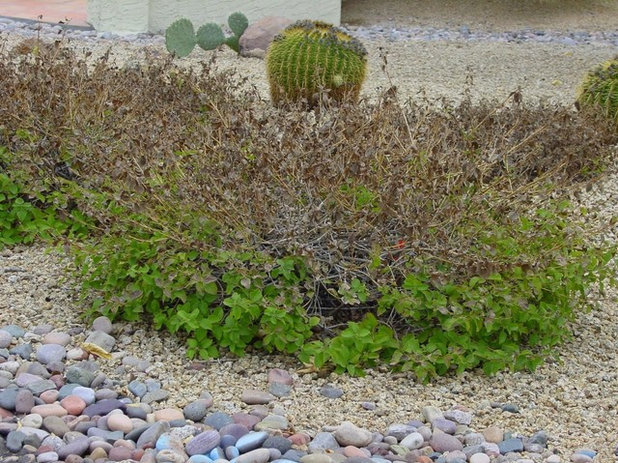
Noelle Johnson Landscape Consulting
What are the signs of damage? The sudden wilting of the outer growth is the first sign your plants have suffered frost damage — leaves are usually affected first. This happens because the plant’s cells have been punctured and their contents have leaked out. The next sign of frost damage is when the wilted growth begins to turn brown and crispy or even black, which indicates that that part of the plant has died.
Cold-temperature injury to plants is first seen on the outer growth, while the undergrowth may still remain green. However, more severe frost damage can affect the entire plant and cause most, if not all, of the aboveground growth to die.
Shown: Frost-damaged lantana (
Lantana montevidensis, zones 8 to 10)
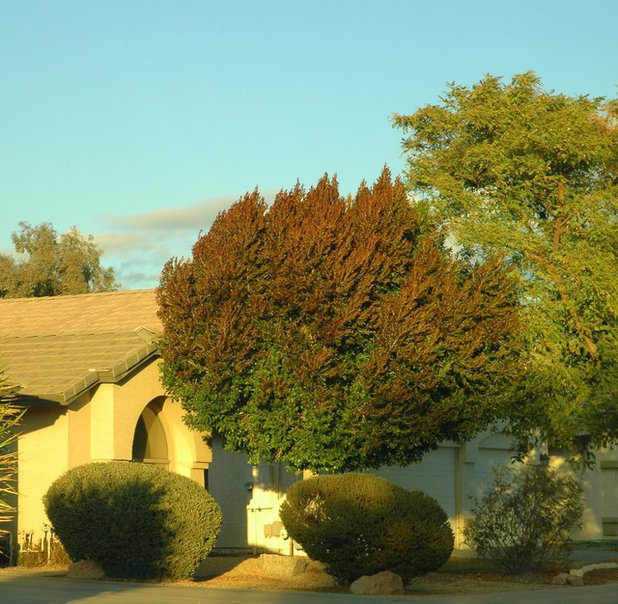
Noelle Johnson Landscape Consulting
What types of plants are affected by frost damage? Different types of plants are susceptible to frost damage. Tender plants, such as tropical plants, are one type. These plants do not tolerate freezing temperatures and can suffer significant damage, or even death, when the temperature goes to 32 degrees Fahrenheit or below. Semitropical plants, such as bougainvillea, lantana and yellow bells (
Tecoma stans var.
stans and
Tecoma stans var.
angustata,
zone 8), can survive temperatures below freezing, often into the 20s, but will suffer significant frost damage and will need to be pruned.
Plants that have not hardened off before freezing temperatures arrive can also suffer frost damage. Hardening off is the process by which plants gradually acclimate to temperature changes over time. Unseasonable freezes, like after plants have emerged from dormancy in late spring, that arrive before the plants have had a chance to adapt to cold temperatures, can damage even cold-hardy plants that can normally handle subzero winter temperatures.
Shown: The outer canopy of an Indian laurel fig tree (
Ficus nitida,
zones 9 to 11) damaged by freezing temperatures
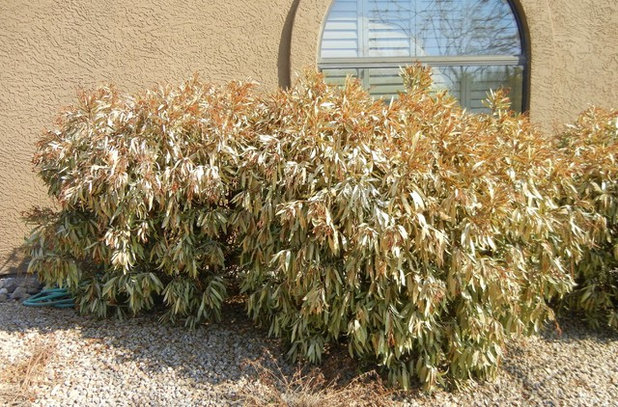
Noelle Johnson Landscape Consulting
How frost-damaged growth protects the rest of your plant. Let’s face it — frost damage is ugly. Who wants to look at dead, brown leaves? Stop before you haul out your pruners in winter and prune all the dead stuff, though — pruning too early may actually kill your plant. In addition, just because a branch has dead leaves hanging off it does not necessarily mean the branch itself is dead.
Shown: Dwarf oleander (
Nerium oleander, zones 8 to 10) shrubs suffering from extensive frost injury
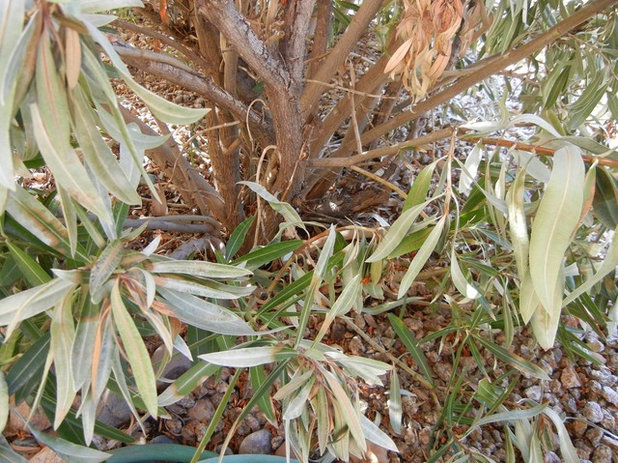
Noelle Johnson Landscape Consulting
Earlier we talked about how frost damage affects the outer part of the plant first and usually injures the plant’s interior last. The damaged outer growth may look ugly, but it serves as a blanket to the interior and provides protection throughout the rest of the winter, when freezing temperatures are likely to occur again. Often homeowners think that their plant is dead until they look underneath toward the base, where green growth is still present or beginning to grow back.
Shown: The interior of a dwarf oleander shrub protected from frost by the outer growth
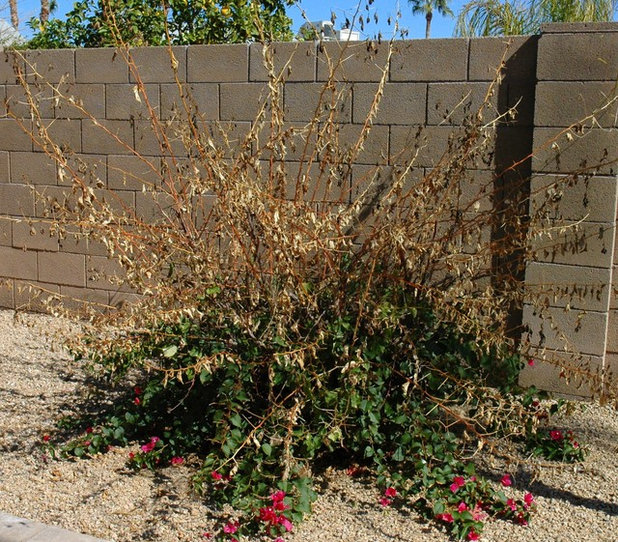
Noelle Johnson Landscape Consulting
When to prune. While frost-damaged growth can protect the lower parts of your plants, the good news is that you don’t have to keep it around forever. After the average last frost date for your area has passed is the earliest time to prune frost-damaged plants. (Check The Old Farmer’s Almanac to see when your average last frost date is.)
You may cause the death of your plant if you prune too early and more freezing weather arrives. Because pruning stimulates new growth, any freezing weather that occurs afterward can cause significant damage to the new growth, which is extremely susceptible to injury from freezing temperatures, and to the plant itself.
Shown: Bougainvillea showing moderate frost damage
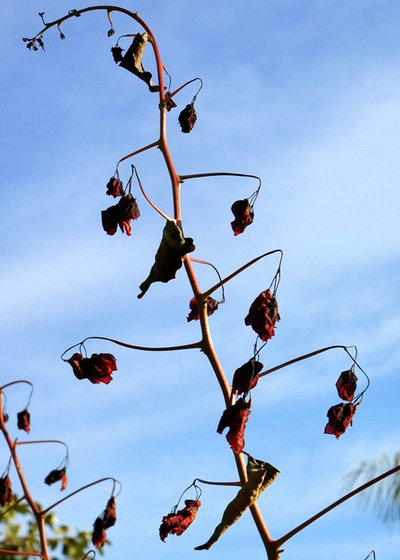
Noelle Johnson Landscape Consulting
Again, it’s important to note that while a branch may have dead leaves hanging from it due to frost damage, the branch itself may not be dead. Damage from freezing affects the leaves first, followed by the stems, branches and roots. For this reason, you may want to wait a few weeks past your last average frost date to see where new growth occurs, instead of cutting your plant back more than needed.
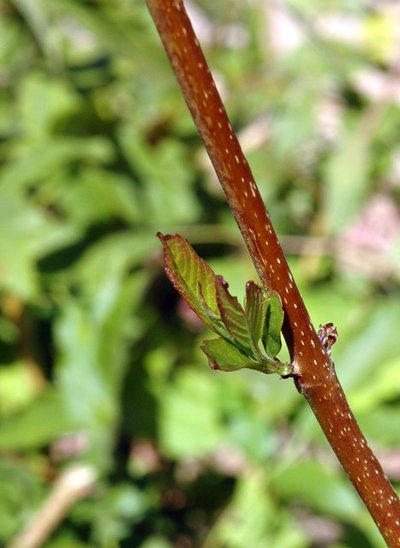
Noelle Johnson Landscape Consulting
How to tell which parts of the plant are dead and alive. Wait until new growth occurs to see which parts of your plant have survived frost damage. Live stems and branches will produce new growth, while those killed by frost damage will not. You may think that your entire plant died only to discover new growth occurring toward the base a couple of months after the last frost date. In this case patience is certainly a virtue.
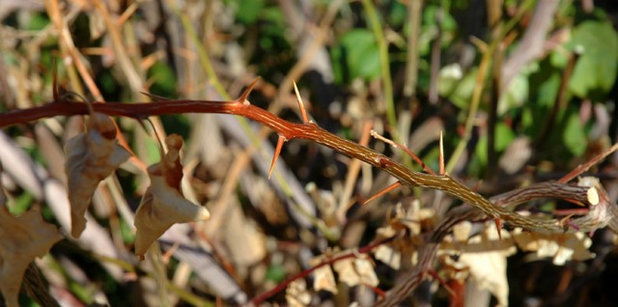
Noelle Johnson Landscape Consulting
For those of you who aren’t patient enough to wait for new growth or can’t tolerate looking at dead, brown growth, look carefully at individual branches of your frost-damaged plants after the last frost date in your area has passed, and see if you notice color variations between the dead growth and the live growth. The photo here shows a live section of bougainvillea branch (right side), which is greener than the dead area (left side).
Another way to tell if a stem or small branch is dead is to try to break it off. If it snaps off, it’s most likely dead. If the branch is flexible, then it is most likely still alive.
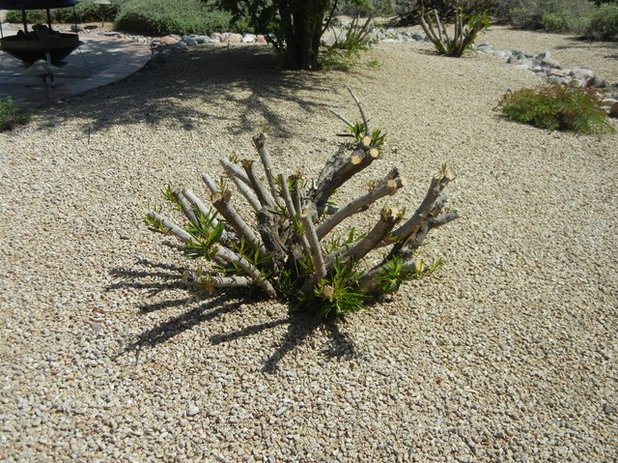
Noelle Johnson Landscape Consulting
Methods of pruning frost-damaged growth. There are two methods of pruning frost-damaged plants, based on the extent of damage. If just the outer growth has been affected, and the growth underneath is unaffected, lightly prune the damaged stems or branches using hand pruners or loppers.
However, if the majority of the upper growth of a plant was killed by the cold, then renewal pruning is the best way to prune. This type of pruning involves severely pruning back the affected areas, often to within a few inches of the ground. Loppers and sometimes a pruning saw will be needed.
Shown: A dwarf oleander shrub that has been pruned using the renewal pruning method
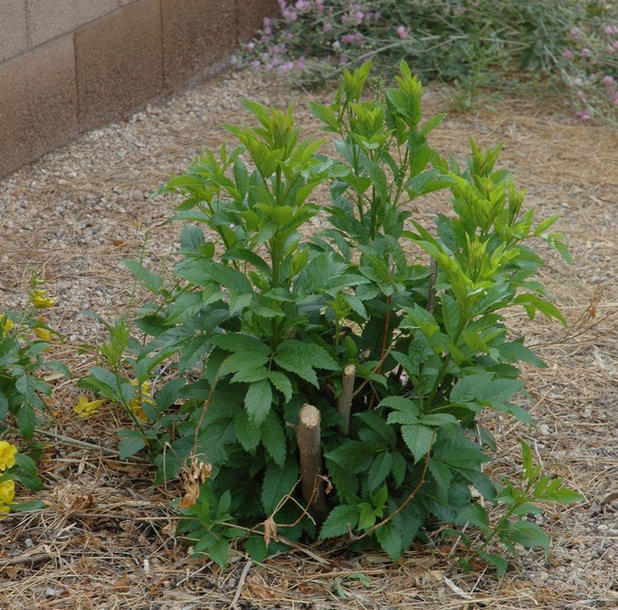
Noelle Johnson Landscape Consulting
Because the base of a plant and its roots are the least susceptible to injury from freezing temperatures, severely pruned plants will often grow right back.
Shown: Yellow bells shrub growing back after severe renewal pruning
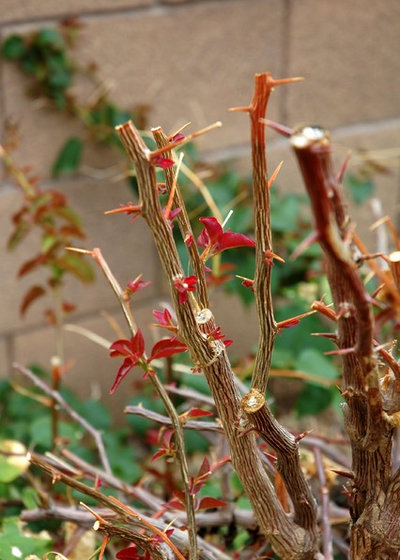
Noelle Johnson Landscape Consulting
Pruning of any kind stimulates new growth, so pruning any frost-damaged parts will not only get rid of the dead, ugly branches but will also stimulate attractive new growth. Since pruning frost-damaged growth occurs in spring, it’s helpful to think of it as spring cleaning for the garden.
Shown: Bougainvillea growing back after its frost-damaged growth has been pruned
Region by region: What to do in your garden this month





